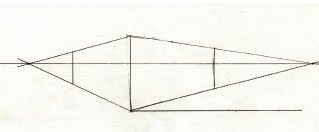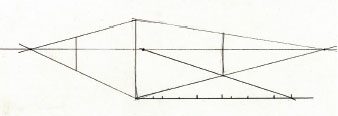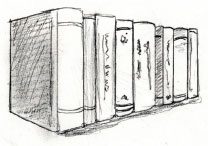When you need to translate irregular sizes to a plane in perspective, a measuring line is very helpful.
Draw your object, complete with its vanishing points and horizon line.
Extend a horizontal line off the bottom corner of the shape.
This is the measuring line. It should run adjacent to the face that you want to transpose the measurements onto.
Make hatch marks on the line to indicate where you want the shapes to fall. The last hatch mark you make will align with the corner of the object.
Draw a line through this hatch mark, through the corner, and up to the horizon line. This is your new vanishing point for the remaining lines.
Using this new vanishing point, connect the other hatch marks line so that they intersect the plane of the shape. You don’t need to draw the whole line; all that will be needed is the point where the two lines cross.
Erase all lines on the face of the shape except for the intersection points. Use a triangle to draw vertical lines up the side of the shape at these marks, and you will have translated the measurements from your measuring line onto the plane in perspective.
Finish the drawing as you like, erasing all guidelines and shading as needed. This technique is good for a wide variety of situations, from adding detail to buildings to putting numbers on a clock. Practice until you’re comfortable using it.
Want To Learn More…

Or in simple words, it’s how you make your drawings look real!
You have to study it and know the principles if you have any chance at all of bringing our drawings to life.
Learning perspective is a fundamental element that you need to master before you can draw like a true professional.
The good news is that Perspective Mastery is generously illustrated showing you step-by-step how to make your drawings come to life.
With clear (and fun) instructions on how to draw … you’ll learn at your own pace in the comfort of your home.





